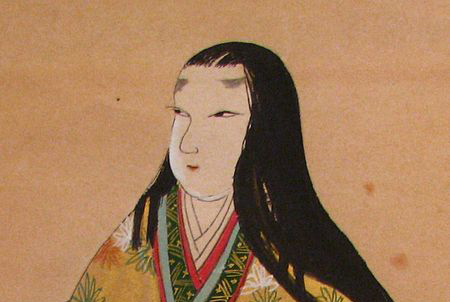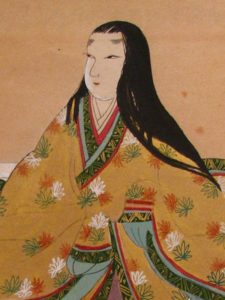
Japan’s Cinderella: Lady Saigō
Lady Saigō (西郷の局), Saigō-no-Tsubone, or Oai (1552-1589) was the first consort and confidante of the samurai lord turned shogun, Tokugawa Ieyasu, who unified Japan in the late sixteenth century. She was also the mother of the second Tokugawa shogun, Tokugawa Hidetada. Lady Saigō is remembered for greatly influencing Tokugawa Ieyasu’s choice in allies, philosophies, and decisions on policies as he slowly gained power during the latter stages of the Sengoku period, affecting the organization and composition of the Tokugawa shogunate.
Portrait of Lady Saigō.
Lady Saigō came to be regarded as the power behind the throne and was posthumously given the highest honor the Emperor of Japan could bestow upon anyone: the position Senior First Rank of the Imperial Court.
Lady Saigō was born in one of the castles belonging to the Saigō clan, Nishikawa Castle. She was initially named Masako and later gained the nickname Oai. Her father, Tadaharu, died in the Battle of Enshu-Omori and her mother re-married to Hattori Masanao. In 1567, Lady Saigō married her cousin Saigō Yoshikatsu; he later perished at the Battle of Takehiro. They had two children, a son, Saigō Katsutada, and a daughter named Tokuhime. After her husband’s death, Lady Saigō was formally adopted by her uncle Saigō Kiyokazu who was the head of the Saigō clan.
 Lady Saigō first met Tokugawa Ieyasu when she was around 17, when he visited the Saigō clan. He was served tea by none other than Lady Saigō herself. Nothing came of their first meeting because Lady Saigō was married at the time and Tokugawa Ieyasu was also married to Lady Tsukiyama. Genuine affection only later began to develop in the 1570s and during the Battle of Mikatagahara in 1573 when Tokugawa Ieyasu began confiding in Lady Saigō on different matters and they developed a relationship.
Lady Saigō first met Tokugawa Ieyasu when she was around 17, when he visited the Saigō clan. He was served tea by none other than Lady Saigō herself. Nothing came of their first meeting because Lady Saigō was married at the time and Tokugawa Ieyasu was also married to Lady Tsukiyama. Genuine affection only later began to develop in the 1570s and during the Battle of Mikatagahara in 1573 when Tokugawa Ieyasu began confiding in Lady Saigō on different matters and they developed a relationship.
Portrait of Tokugawa Ieyasu.
Lady Saigō’s advice regarding the Battle of Nagashino in 1575 made a great impact not only in Tokugawa Ieyasu’s career but the history of Japan as well.
In 1578, Lady Saigō moved to Hamamatsu Castle where she quickly gained popularity among the people. Once she had already established a secure and respectable position as the first consort and mother to Takugawa Ieyasu’s heir, she began to focus her wealth and influence on charitable purposes. She was a devout Buddhist who donated money to temples where she resided as consort, and she also established a charitable foundation that assisted visually impaired women.
A true Cinderella story, Lady Saigō rise to power came from humble beginnings. Though she died relatively young, her legacy is forever remembered in the history of Japan.

